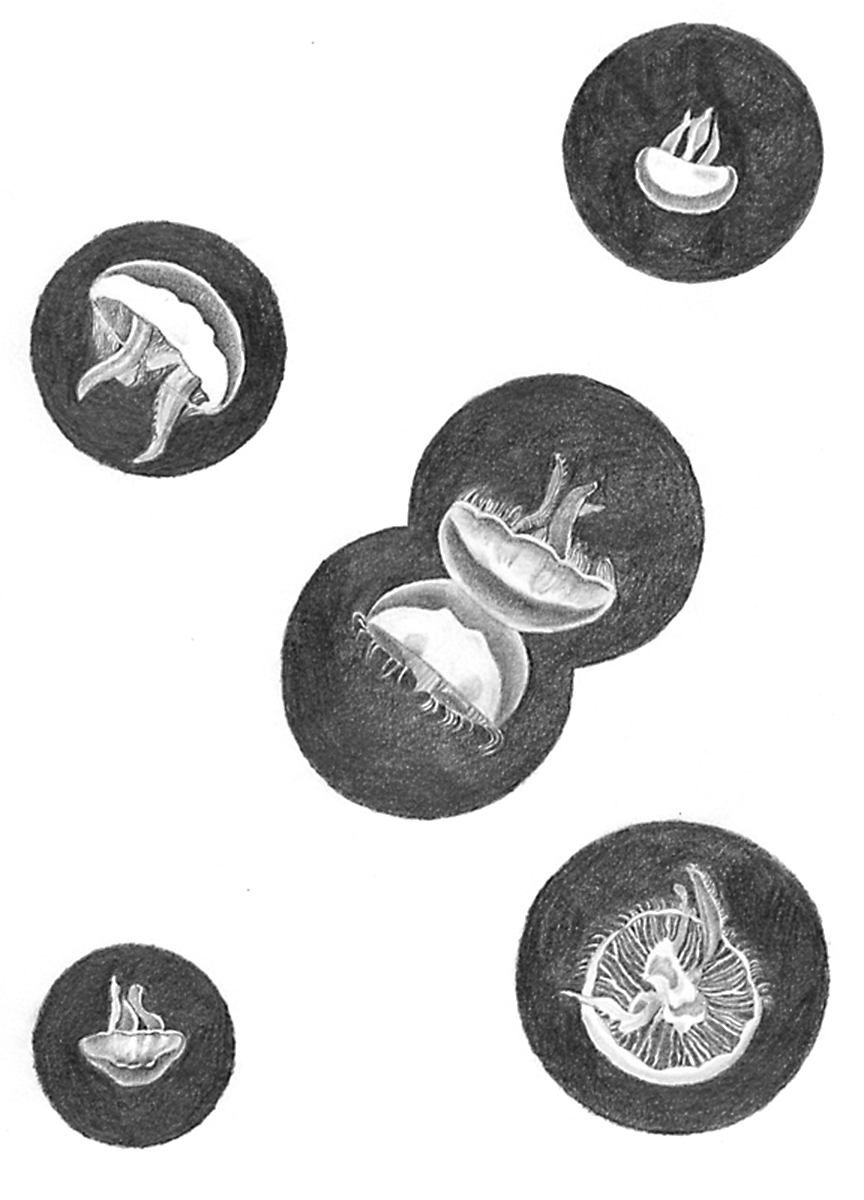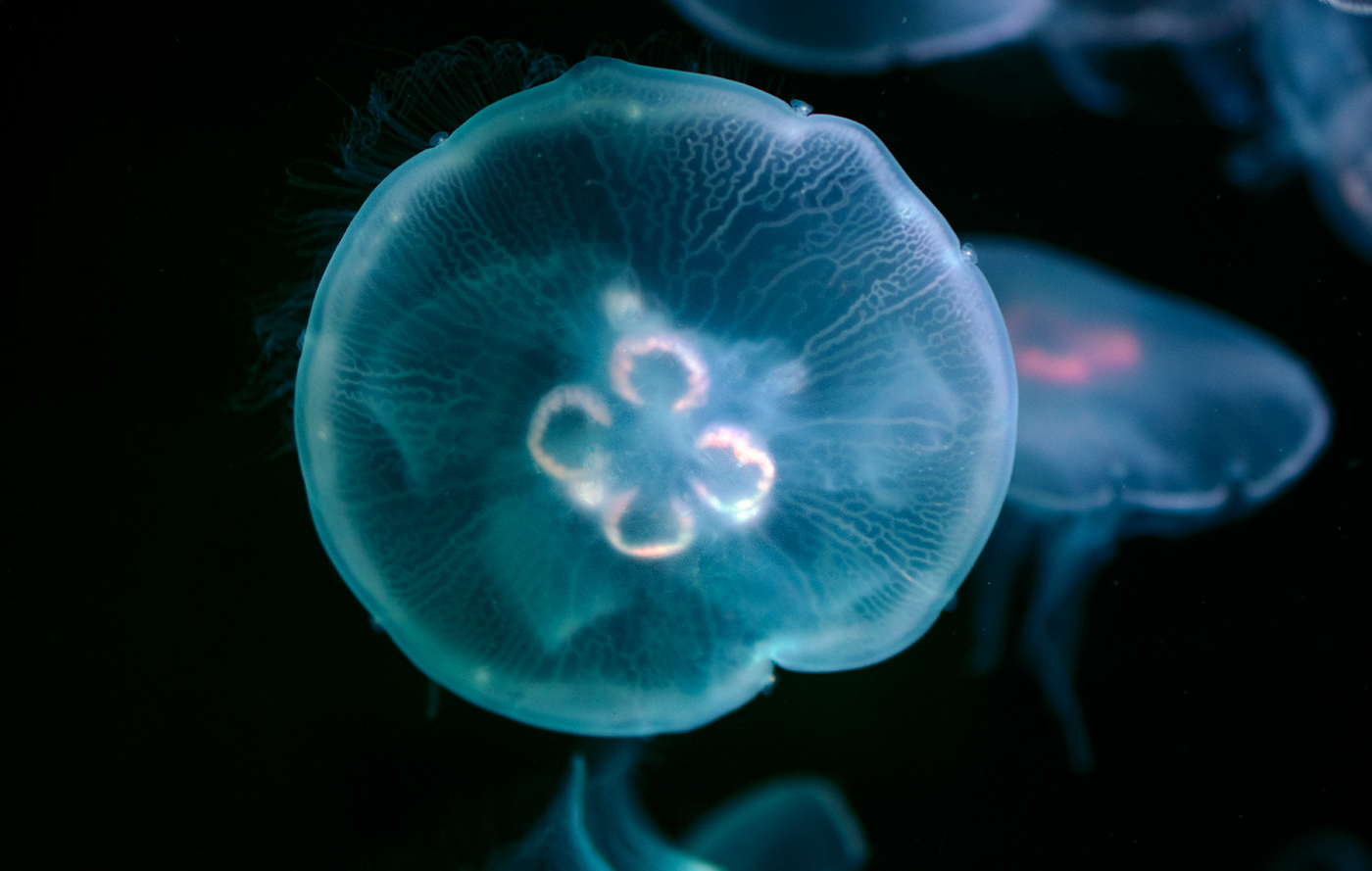Author: James Murray
Illustrations: by Moloud Mazaheri
Scientific name: Aurelia labiata
Size range: 25-40cm (9,8-15.8in)
Identifying Features: The Moon Jellyfish (Aurelia labiata) ranges from 25 to 40 cm (9.8 to 15.8 in) in diameter and can be easily recognized by the four horseshoe-shaped rings on its bell. A. labiata is not perfectly circular, but has multiple ridges around its bell between its rhopalia. It also has four oral arms leading up to its mouth and many short tentacles all around its bell. A. labiata may be confused with A. aurita, a closely related species found along the eastern Atlantic coast of Northern Europe and the western Atlantic coast of North America in New England and Eastern Canada.
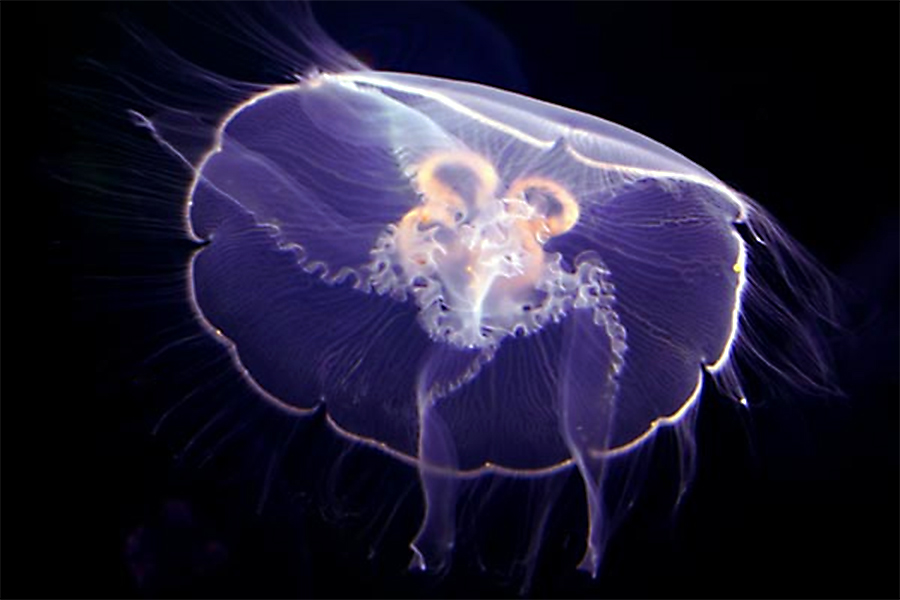
Habitat: Moon jellyfish are found along the west coast of North America all the way from southern Alaska to southern California and as far out into the open ocean as Hawaii. Moon Jellyfish can be found up to 1000m (3280ft) below sea level in waters ranging from -6 to 31 degrees celsius; but often float near the surface, especially in bays and harbours. In the summer and through autumn, moon jelly fish are found in dense aggregations.
Prey: A. labiata feeds mainly on zooplankton such as mollusks, crustaceans, fish eggs, and other small jellies. The plankton is caught on the mucus lining the bell of the jelly and is moved by cilia to the bell margin. From here, tentacles help funnel the food into the manubrium and stomach pouches at the top center of the bell. The food is then transported through a system of canals that can be seen in the video. When starved, the moon jellyfish can shrink dramatically in size while still retaining functionality.
The feeding polyps and strobilating schyphistoma of Aurelia labiata
Predators: The main predators of the Moon Jellyfish include the Rockfish, sea birds, turtles, and other cnidarians including the Lion’s Mane jellyfish (Cyanea capillata) and the Fried Egg jellyfish (Phacellophora camtschatica). The Moon jellyfish’s only hope to avoid predators is to sting them with the nematocysts on its tentacles, but these are only effective on small creatures.
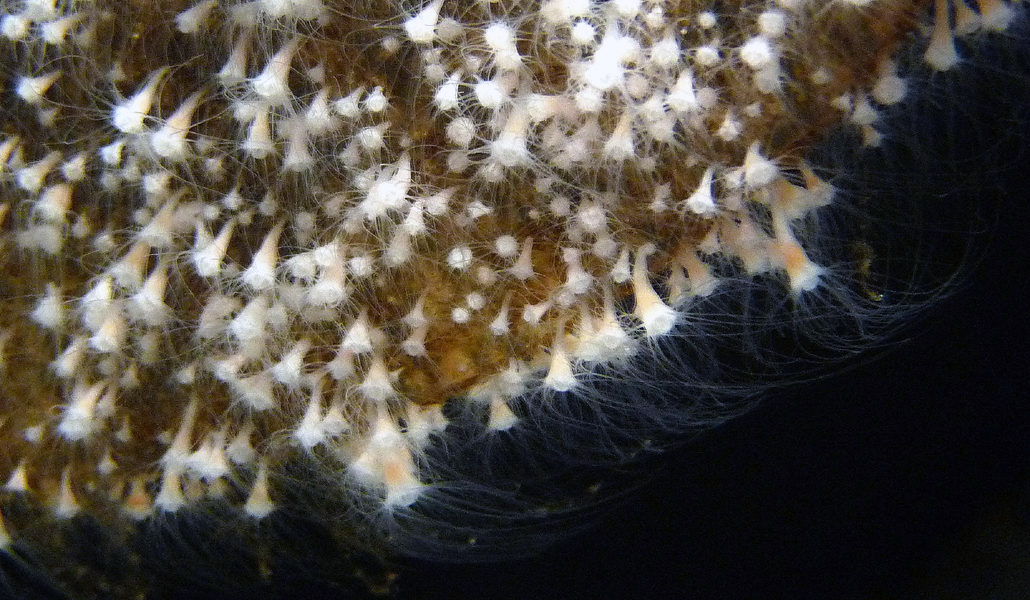
Life Cycle: A. labiata reproduce through internal fertilization. Males hold sperm filaments on their oral arms during mating season and these sperm are picked up by females. Sperm is carried to the females gastric pouch by cilliary currents. The female hold the fertilized eggs, which appear as grey clumps on the manubrium. The zygotes of A. labiata are brooded on the jelly’s manubrium in tear-drop shaped clumps. Eventually they are shaken off and continue their development after attaching to a substrate. Polyps usually strobilate in early spring, and the young medusa, called ephyra, mature very quickly. The adults spawn, and die by mid-summer or early fall; however, in certain places medusae are present all year.
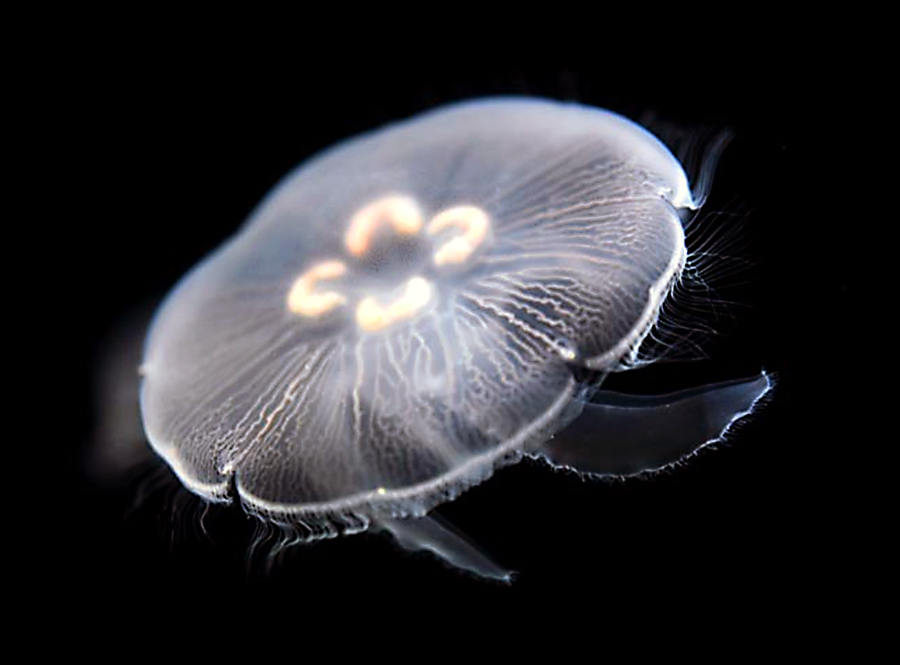
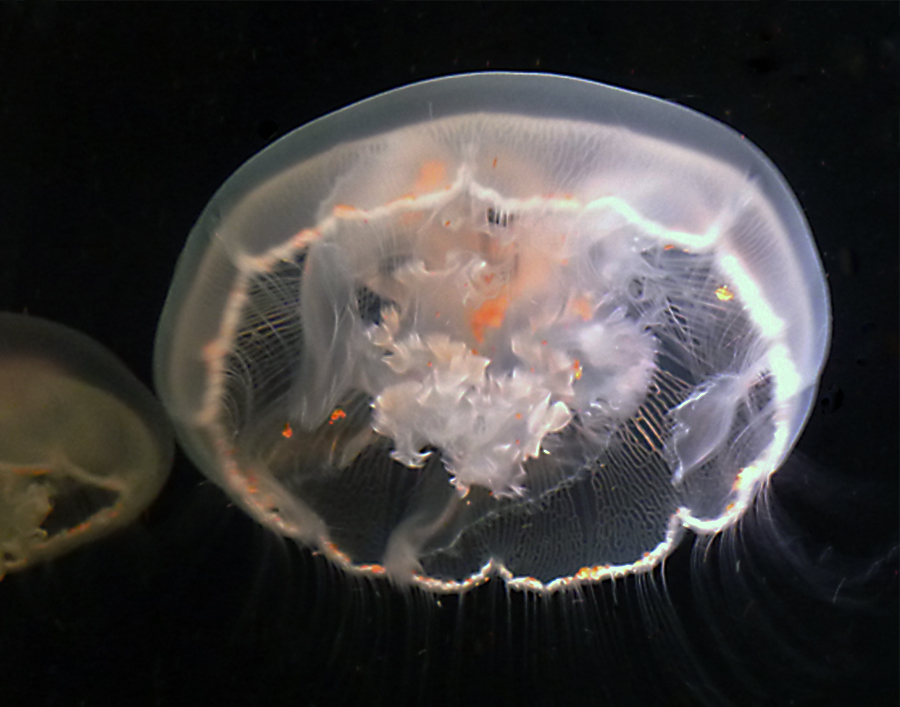
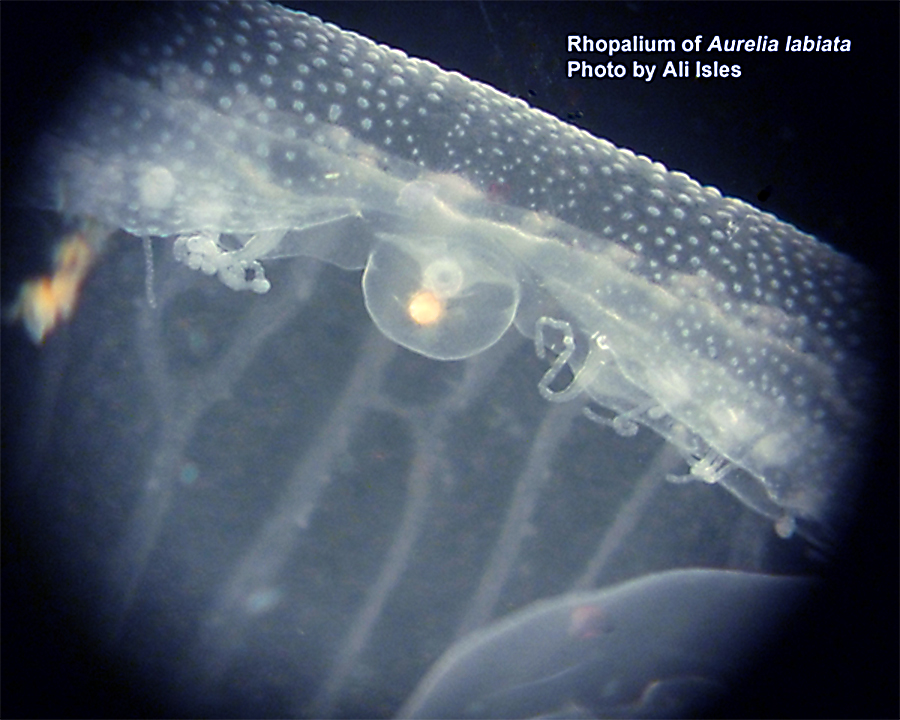
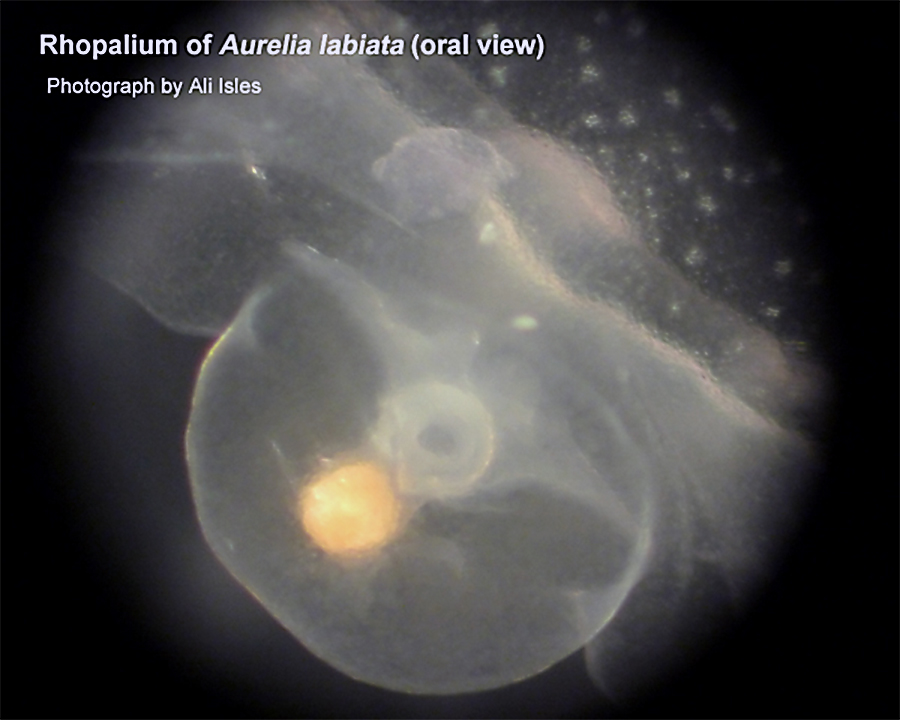
Photography by Ali Isles and D. Young
Illustrations by Moloud Mazaheri
References:
Cowles, D. (2006). Walla Walla University. Retrieved May 3, 2012 fromhttp://www.wallawalla.edu/academics/departments/biology/rosaria/inverts/Cnidaria/Class-Schyphozoa/Order-Semaeostomeae/Family-Ulmaridae/Aurelia-labiata.html
Macmullan, C. (2005). Animal Diversity Web. Retrieved May 3, 2012 fromhttp://animaldiversity.ummz.unmich.edu/site/accounts/information/Aurelia-labiata.html
Mills, C. (1998). Pacific Coast Pelagic Invertebrates. A guide to the Common Gelatinous Animals. Monterey, California: Monterey Bay Aquarium.
